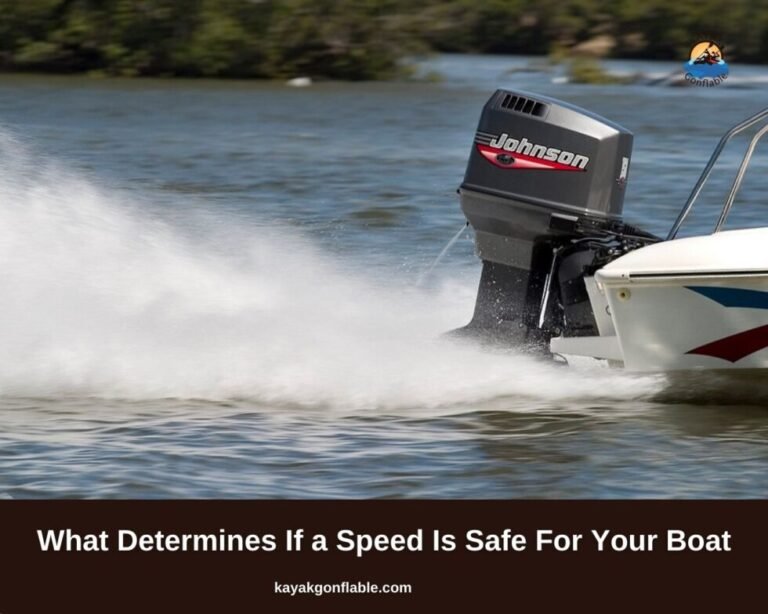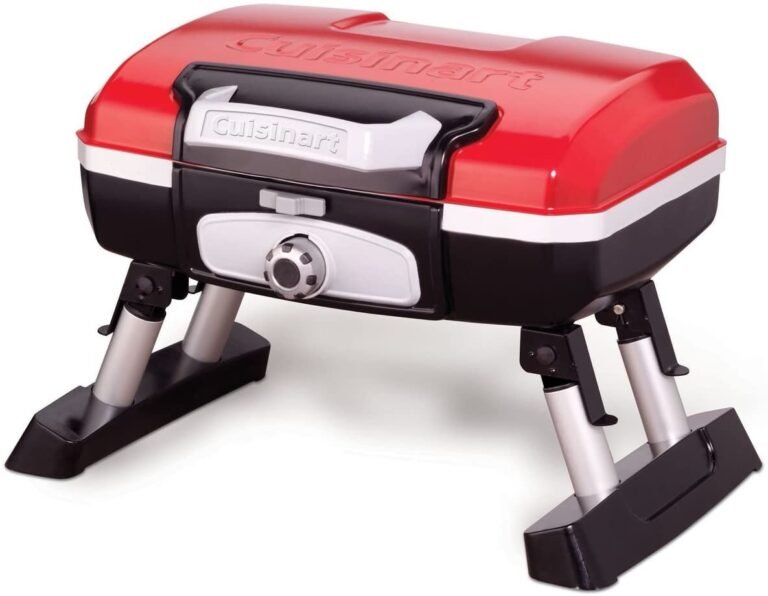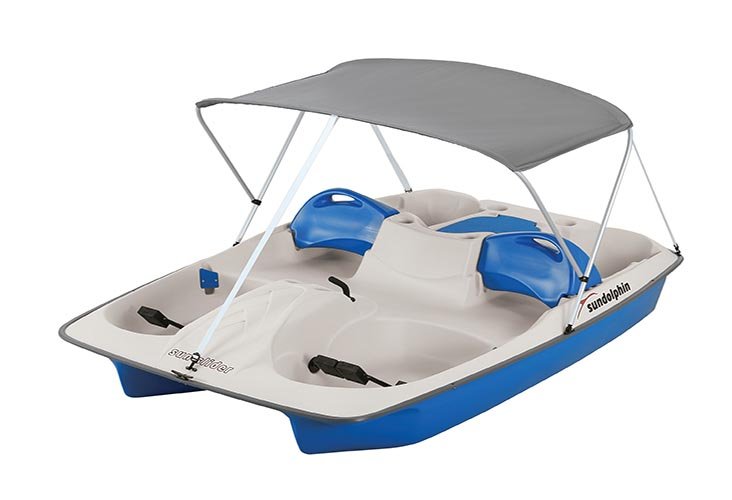How Anchors Keep Recreational Boats in Place

Anchoring isn’t just about keeping your boat in place, it’s the secret to stress-free adventures on the water. Whether you’re casting a line, taking a dip, or just soaking up the sun, a well-set anchor ensures you stay exactly where you want to be.
Mastering the right techniques and choosing the best anchor for the job means no surprise drifts, unexpected bumps, or accidental beach landings. With solid anchoring skills, you can kick back, relax, and enjoy the waves without worrying about floating off into the unknown.
How does anchoring work?
Ever wondered how an anchor keeps your boat from drifting away? It all comes down to friction, suction, and weight working together to hold your vessel in place.
- Friction: The real MVP of anchoring. Most anchors dig into the seabed, creating resistance against wind and water. Soft seabeds like sand and mud offer a secure grip, while rocky or grassy bottoms make anchoring trickier.
- Suction: In muddy or silty areas, some anchors create a vacuum-like effect, making them even harder to dislodge. The deeper they settle, the stronger they hold.
- Weight: While heavier anchors add resistance, their holding power depends more on design than sheer mass. Even lightweight anchors can outperform bulky ones if they dig in properly.
Factors Influencing Anchor Performance
Dropping an anchor isn’t just about tossing it overboard and hoping for the best. Previously, we mentioned the basic principles of anchoring, but several factors determine whether your boat stays firmly in place or starts an unplanned drift. Understanding these elements will help you pick the right anchor and use it like a pro.
- Anchor Weight and Size: Choosing the right anchor isn’t just about grabbing the heaviest one you can find. It’s all about matching the anchor to your boat’s size and the conditions you’ll face. If you’re dealing with strong currents or gusty winds, you’ll need an anchor with serious holding power. But size matters too, the shape and design affect how well the anchor grips the seabed. Get the right match, and your boat will stay put, no matter what Mother Nature throws at you.
- Bottom Type: Anchors don’t work the same on every type of seabed. Think of it like shoes, different surfaces need different treads. A fluke-style anchor loves soft, sandy, or muddy bottoms, digging in deep for a solid grip. Meanwhile, rocky seabeds are best tackled with a grapnel anchor, designed to latch onto rough surfaces. Picking the right anchor for the bottom type is key to preventing slips, drags, and frustrating resets.
- Anchor Design: Not all anchors are built the same. Some are made to dig in deep and stay put, while others are designed to reset quickly if they get dislodged. A fluke-style anchor has broad, flat surfaces to hold tight in soft sediment, while a plow-style anchor is a versatile champ that self-resets when conditions shift. The secret to a secure anchor? Knowing which design works best for your adventures on the water.
- Rode (Anchor Line): An anchor is only as good as the line that connects it to your boat. The length and material of your rode, especially if it includes a chain, can make or break your anchoring success. A good mix of rope and chain helps keep the pull angle low, boosting holding power. The chain also adds weight, keeping the line close to the seabed and improving overall stability. It’s the ultimate teamwork between the anchor and the rode that keeps your boat locked in place.
Types of Anchors and Their Holding Power
Anchors are the unsung heroes of boating, keeping your vessel steady so you can fish, swim, or just relax without drifting into the unknown. Every recreational boater needs one, but with so many options out there, picking the right anchor can feel like navigating choppy waters.
Each anchor type comes with its own perks and quirks, some are perfect for sandy shores, while others grip rocky bottoms like a champ. Choosing the best one for your boat (and knowing how to use it properly) is the key to a stress-free day on the water. So, let’s dive into some top tips on using different anchors to keep your boat exactly where you want it.
Plow Style Anchors
When it comes to anchors, there are many different types to choose from. But one of the most popular types is the plow style anchor. A plow anchor, such as the CQR and Delta, is a type of boat anchor that is designed to bury itself in the bottom of the water.
It gets its name from the shape of its blade, which is similar to that of a plow. This type of anchor is often used in areas with a lot of sediment because it can quickly bury itself and provide a stable hold. The anchor consists of a single curved blade that digs into the seabed.
This type of anchor has a number of benefits that make it a great choice for any vessel. The plow style anchor is designed to bury itself in the seabed as it’s lowered. This makes it very stable and ensures that it won’t move no matter how rough the seas get.
Additionally, it has a large surface area which helps it grip the seabed securely. This type of anchor is durable, reliable, and very easy to use. All you have to do is lower it down to the seabed and then let go. It will take care of the rest by burying itself and holding your boat in place.
The plow style anchor is versatile and can be used in a variety of applications, it is not ideal for rocky or heavily weeded areas where it may struggle to grip. The plow style anchor is also great for use in shallow water or areas with a lot of rocks since it has a large surface area that digs into the bottom.
However, the plow style anchor should not be used in deep water or near reefs because it can easily get stuck. The plow anchor is a great choice for your recreational boat if you are looking for an anchor that will hold your boat in place in a variety of conditions.
Danforth Anchors
Danforth anchors are the most popular anchors on the market. They are made of metal and have 2 triangular flukes designed to dig into the ground and hold the boat in place. They are made of metal and the flukes dig into the seabed by pivoting when pulled. There are several different types of Danforth anchors, but they all have one thing in common – they are reliable and durable.
Danforth anchors are a popular choice for boat owners looking for an anchor that is both durable and reliable. The Danforth design is simple and efficient, making it a popular option for boaters. Additionally, the Danforth anchor is known for its holding power, making it a great choice for anchoring in windy or rough conditions.
The Danforth anchor can be used in a variety of applications and environments, making it a versatile option for boaters. It is favored for its ease of use and holding power in a variety of soils.
How To Correctly and Efficiently Use The Danforth Anchor
There are a few things to keep in mind when using it in order to achieve the best results. First, make sure you select the right size anchor for your boat. The anchor must be sized to fit your boat’s bow chock or bow roller. The anchor and its rode (the line attaching the anchor to the boat) should also fit in.
Second, use plenty of chain (or rope) between the anchor and the boat. Third, make sure you stake the anchor well into the ground. A longer stretch of line means more flexibility. It can help you avoid a fouled anchor if the wind suddenly changes direction or decides to blow harder and faster than anticipated.
Finally, always use a sturdy line to attach the anchor to the boat. With these tips in mind, you can use your Danforth anchor with confidence and efficiency.
Claw Anchor
The claw anchor is a newer design that has been gaining in popularity in recent years. Many believe it to be more reliable than the other two designs and can hold better in adverse conditions. The anchor is made up of a one-piece design that opens and closes to grip the bottom of the river or ocean floor.
The claw anchor is known for its durability and strength, and is often used by fisherman and recreational boaters. Claw anchors are made up of a number of metal claws that are attached to a shackle. The claws are then buried in the seabed with the shackle remaining above the surface.
Claw anchors are popular because they can be quickly deployed and provide good holding power in a variety of soil types. It can be set in mud, sand, or gravel and provides a secure hold, however it may struggle in soft mud or heavy grass.
Claw anchors are often used for mooring boats, but they can also be used to stabilize tents or other structures. In order to use a claw anchor effectively, you must first identify the type of terrain you will be anchoring in. If the ground is soft, you will need to use more weight than if the ground is hard.
Anchoring Blunders: What NOT to Do.
Even seasoned boaters make anchoring mistakes that can turn a peaceful day on the water into a floating fiasco. Drifting, difficult retrieval, or even dangerous mishaps often come down to a few common errors, but don’t worry, they’re easy to avoid once you know what to watch out for.
1. The “Drop It and Hope” Mistake
One of the biggest blunders? Not using enough scope (anchor line). Many boaters simply drop the anchor straight down, expecting it to hold, which rarely works. For the best grip, you need a proper scope ratio of at least 5:1 (five feet of rode for every foot of water depth). This keeps the anchor at an angle where it can actually dig in and do its job.
2. Ignoring the Seabed: Anchors Have Preferences Too.
Would you wear flip-flops to climb a rocky trail? Of course not. Just like shoes, anchors work best in certain conditions. Sandy and muddy bottoms? Great for fluke-style anchors. Rocky or grassy areas? You’ll need a grapnel or plow anchor. Drop the wrong anchor in the wrong place, and you’ll be dragging instead of staying put.
3. The “Set It and Forget It” Trap
Simply tossing the anchor overboard and hoping it holds is like parking a car without using the brakes. After letting out the proper scope, always back down gently in reverse to help the anchor dig in. This step ensures a firm grip and prevents your boat from suddenly drifting when you least expect it.
4. Rushing the Retrieval
Pulling up the anchor too fast doesn’t just wear out your rode, it also increases the chance of it getting stuck or tangled. Take your time when retrieving it, and if it’s stuck, maneuver the boat gently to free it instead of yanking.
5. Anchoring Too Close to Other Boats
Nothing ruins a relaxing outing like a near-miss with a neighboring boat. If conditions change, a poorly anchored boat can swing or drift into others, creating chaos. Always leave plenty of space between you and other vessels to avoid an awkward (and possibly expensive) collision.
By avoiding these common mistakes, you’ll have a secure, hassle-free anchoring experience, so you can relax, enjoy the waves, and trust that your boat will stay exactly where you left it.
Anchoring Techniques
- Choosing an Anchorage: Picking the right anchorage is key. Look for an area with the ideal depth, a seabed that suits your anchor type, and protection from strong winds or waves. A well-chosen spot means better holding power and a smoother experience.
- Setting the Anchor: No splashy, tangled mess here. Lower the anchor slowly to keep it from knotting up, and let out enough rode (anchor line). A good rule of thumb is five to seven times the water depth. This keeps the pull angle low, allowing the anchor to dig in. For extra security, gently reverse the boat to help it settle in place.
- Checking the Set: Don’t just assume you’re locked in, verify it. Use landmarks onshore or navigation instruments to make sure you’re not drifting. If your anchor starts to drag, no worries, just reset it before you find yourself on an unexpected journey.
- Retrieving the Anchor: Ready to move? Steer the boat directly over the anchor and pull the rode in steadily. If it’s stubborn and won’t budge, try adjusting the boat’s position to loosen it up, no need for a tug-of-war with the seabed.






